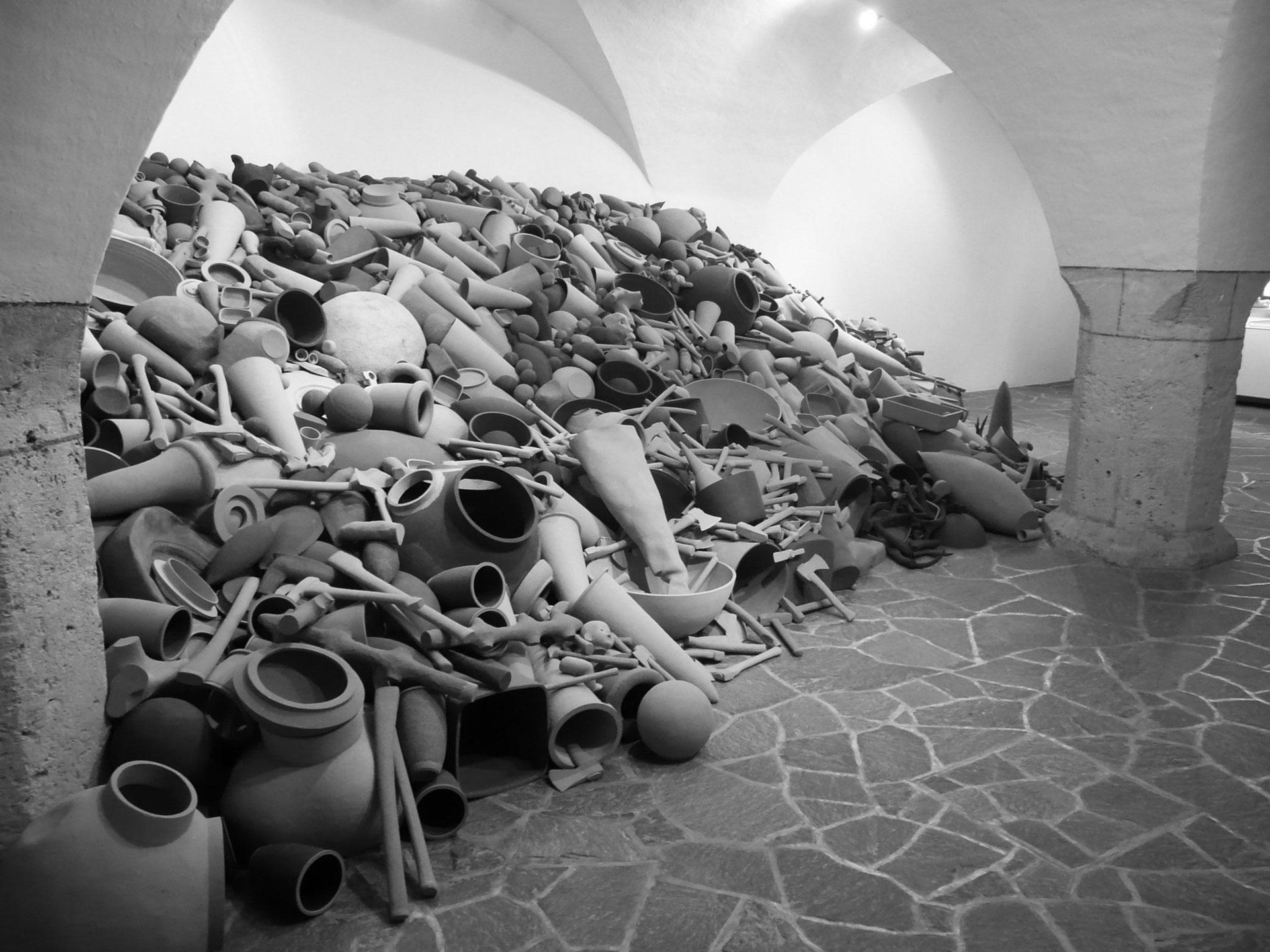- Wed, 18. September 2024
- 16:00
- Gallery Nothburga
Exhibition: Barbara Fuchs and Martin Dickinger

Martin Dickinger (born 1959, lives and works in Vorchdorf/Upper Austria, technical college for wood and stone sculpture, art college Linz, member of the artists' association MAERZ Linz and DIE FORUM Wels, exhibitions in Austria and abroad) speaks visually about the abundance of things in our everyday world. With the vast number of moulded and over-moulded objects, he shows us how much and what all and how naturally we deal with products of our time. He acts as a service provider by showing us the accumulations we surround ourselves with and how thoughtlessly we use/waste them. Everything is obtainable, everything is always at our disposal. If the item is no longer needed, it is disposed of, used again, procured anew and so on. Martin Dickinger also remains true to himself in his choice of working material: he takes care of the professional processing of newsprint by making papier-mâché out of it and moulding everyday objects with it. He clones, multiplies and reproduces in order to then pile it up and arrange it in an uncoloured way. Martin Dickinger designs, organises, arranges, stores, groups and places. The heap irritates with its material aesthetics and forms a visual counterpart to the prints by Barbara Fuchs. While Martin Dickinger plays with reproduction, Barbara Fuchs is not concerned with it, even though her genre is printmaking.
Barbara Fuchs (born 1966, lives and works in Hall in Tirol, glass school Kramsach, wood and stone sculpture Innsbruck, member of the Professional Association of Austrian Visual Artists, Xylon, Intakt, Atelier für Druckgrafik Hall i. T., exhibitions in Austria and abroad) uses aluminium as a printing plate, which is very soft and therefore does not allow for an edition. Only so-called state prints are printed, each one unique. The intaglio prints by Fuchs on display at Galerie Nothburga were created in 2023 and 2024 in the printing workshop in Hall. They are complemented by artist's books, also unique pieces, of course. As a draughtswoman, she works mainly with the line, mostly using the drypoint technique, i.e. without etching directly into the plate, and not in small format as is usual in this technique. She plays with light and dark and line and surface.

- Upcoming dates
- Past dates
- There are no upcoming dates
September
Wed, 18. September 2024 at 16:00
Thu, 19. September 2024 at 16:00
Fri, 20. September 2024 at 16:00
Sat, 21. September 2024 at 11:00
Wed, 25. September 2024 at 16:00
Thu, 26. September 2024 at 16:00
Fri, 27. September 2024 at 16:00
Sat, 28. September 2024 at 11:00October
Wed, 2. October 2024 at 16:00
Thu, 3. October 2024 at 16:00
Fri, 4. October 2024 at 16:00
Sat, 5. October 2024 at 11:00